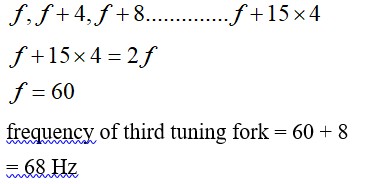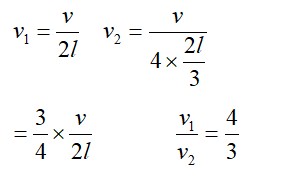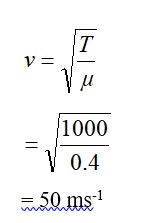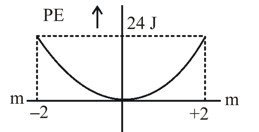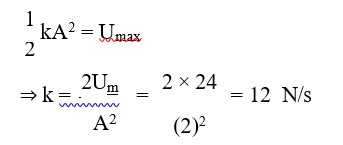Assume that the displacement (s) of air is proportional to the pressure difference (Ap) created by a sound wave. Displacement (s) further depends on the speed of sound (v), density of air ( ρ ) and the frequency (f). If Ap ~ 10 Pa, v ~ 300 m/s, p ~ π11g/m³ and f ~ 1000 Hz, then s will be of the order of (take the multiplicative constant to be 1)
Assume that the displacement (s) of air is proportional to the pressure difference (Ap) created by a sound wave. Displacement (s) further depends on the speed of sound (v), density of air ( ρ ) and the frequency (f). If Ap ~ 10 Pa, v ~ 300 m/s, p ~ π11g/m³ and f ~ 1000 Hz, then s will be of the order of (take the multiplicative constant to be 1)
Option 1 -
1/10 mm
Option 2 -
10 mm
Option 3 -
3/100 mm
Option 4 -
1 mm
-
1 Answer
-
Correct Option - 3
Detailed Solution:B? = µ? I/ (2π (r)
|τ| = |I * l x F|
τ = 2aF
τ = 2 (a) (I) (2a) (µ? I/2πb)
τ = 2µ? I²a²/πb
B on the also equal to B? as
B = µ? I/ (2π√ (b² + a²/4) + µ? I/4
b >>> a
disp = ( kg/ms ²) (s) (m³/kg)
disp = (1) (16) (1/300) (1/1000)
disp in mm = 1000/ (300x100) = 0.03333
⇒ 3/100
Similar Questions for you
The acceleration of wave is g/2. Its speed increases as it moves up. So answer is (2)
Taking an Exam? Selecting a College?
Get authentic answers from experts, students and alumni that you won't find anywhere else
Sign Up on ShikshaOn Shiksha, get access to
- 66k Colleges
- 1.2k Exams
- 680k Reviews
- 1800k Answers

